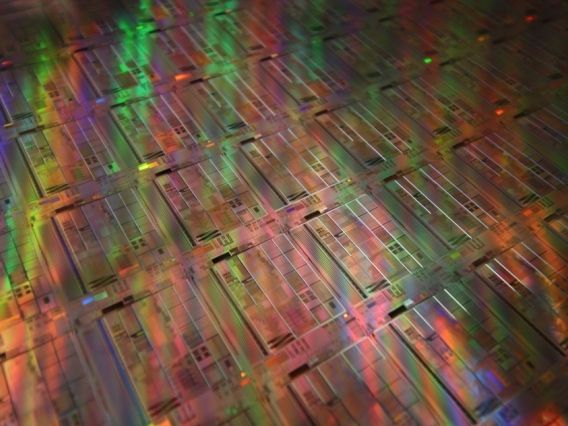New catalyst uses light to convert nitrogen to ammonia
Method could lead to more environmentally friendly fertilizer production
Advertisement
Northwestern University scientists are the first to develop a catalyst that can perform a remarkable feat found only in nature: take nitrogen from the air and turn it into ammonia under natural conditions. No high temperatures or pressure required. Driven by light, the new method offers promise for a more environmentally friendly fertilizer.
"This is a big-deal reaction, turning nitrogen into ammonia under ambient conditions," said inorganic chemist Mercouri G. Kanatzidis, who led the research. "Scientists have been fascinated by the biological enzyme nitrogenase, which catalyzes the reaction in nature, for more than 60 years. Now we have created a successful mimic of nature's process."
Plants rely on the nitrogen fixation process for nutrition and growth. Nitrogen straight from the atmosphere is inaccessible to plants, so the nutrient must be in a reduced form, such as ammonia.
The Northwestern method uses light to catalyze the important reaction. A process that uses abundant solar energy to turn nitrogen into ammonia offers an attractive alternative to Haber-Bosch, the industrial standard for producing ammonia, Kanatzidis said. The Haber-Bosch process consumes more than 1 percent of the world's energy supply.
While only a proof of concept at this point, it is an impressive discovery. Nitrogen is very stubborn - it doesn't like to interact with other molecules. Nitrogen's three single covalent bonds are very difficult to break.
To attack the problem, Kanatzidis and his colleagues turned to an interesting material they had developed earlier, a chalcogel. This porous material, similar to a sponge, provides a lot of surface area, which has advantages. They made a chalcogel using a cluster of iron, molybdenum and sulfur (FeMoS), the key metals found in nitrogenase that reduce nitrogen.
"With its high surface area, the material offers a lot of reactive sites where the nitrogen can react as it flows through," Kanatzidis said.
Another advantage of the chalcogel material is its color; it is black, so it absorbs a lot of light. The researchers thought they might be able to tap that energy.
"My colleagues and I said, 'Let's do a crazy experiment,'" Kanatzidis said. "Let's excite the chalcogel with light, give it some nitrogen and see if the material will reduce the nitrogen to ammonia. To our surprise, we saw ammonia forming, and the ammonia got more and more intense over time."
The FeMoS co-factor in the chalcogel binds to nitrogen and reduces it by eight electrons, making two ammonia molecules and one hydrogen molecule, just as happens in nature.
After the early positive results, the Northwestern researchers conducted a number of control experiments that confirmed the ammonia produced did indeed come from the nitrogen and not some other source.
The chalcogel material is very robust. "This catalyst can go and go and go and still work," Kanatzidis said. "Nitrogenase in biological systems has to rebuild itself every six to eight hours."
The researchers do concede, however, that their catalyst is slower than nitrogenase, approximately 1,000 times slower.
"But nitrogenase had two or three billion years to evolve," Kanatzidis said. "We are happy that our material reduces nitrogen much like nitrogenase. It's a fantastic starting point. Now we are trying to figure out how this material works and how it can become faster. We've already made some progress in this direction."
Original publication
Abhishek Banerjee, Eric A. Margulies, Yongbo Zhang, Benjamin D. Yuhas, Yurina Shim and Michael R. Wasielewski; "Photochemical Nitrogen Conversion to Ammonia in Ambient Conditions with FeMoS-Chalcogels."; Journal of the American Chemical Society.

































































